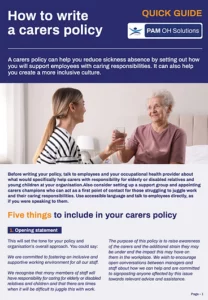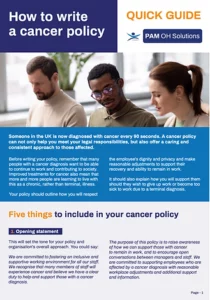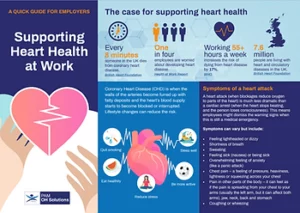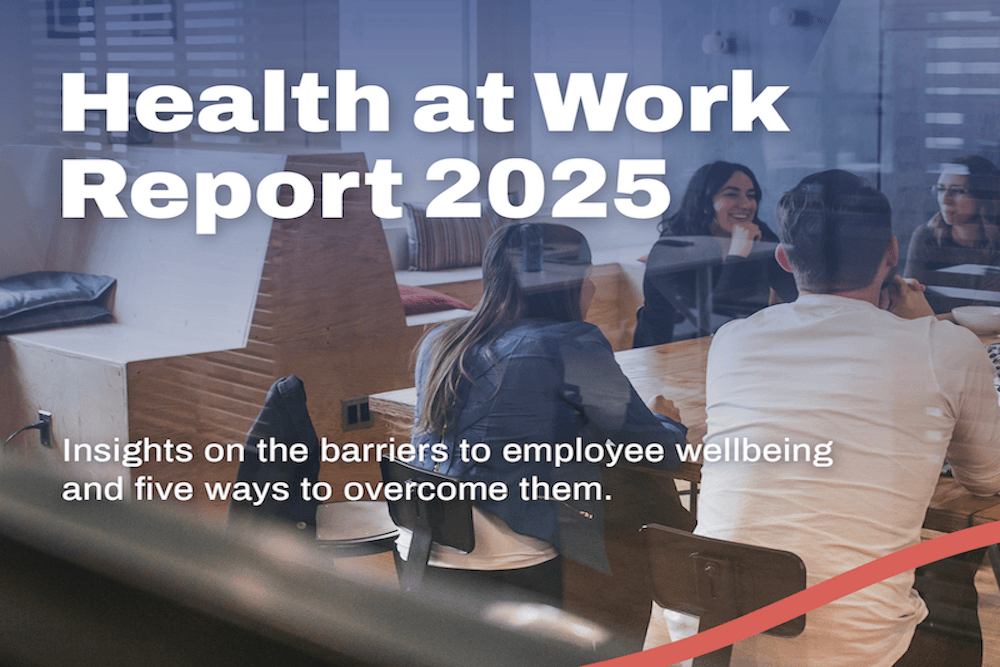
Health at Work Report 2025
- Sickness absence has increased, with 66% of employees taking sick leave in the past year (up from 57% four years ago)
- The duration of sick leave has tripled, with one in five employees taking more than two weeks off sick in the past year
- Employees have been most affected by increased feelings of stress (88%), anxiety (73%) and financial worries (73%)

- 1 in 7 employees has increased their use of drug or alcohol to cope with worries in the past year, leaving to addiction issues
- 2 in 5 employees report sleep problems due to stress, and 1 in 3 struggles with concentration and motivation
- Employees aged 18-34 are turning to AI wellbeing tools more than older colleagues, but these lack the impact of talking therapies


- Proactive wellbeing support makes employees more than twice as likely to take no sick leave and eight times more likely to be very or highly productive
- One in four say work undermines their health or makes them sick, seven out of ten have been affected by work related stress, fatigue and burnout
- 57% of employees want mental health counselling, but only 22% have access to this and just 11% have been able to utilise this in the past year
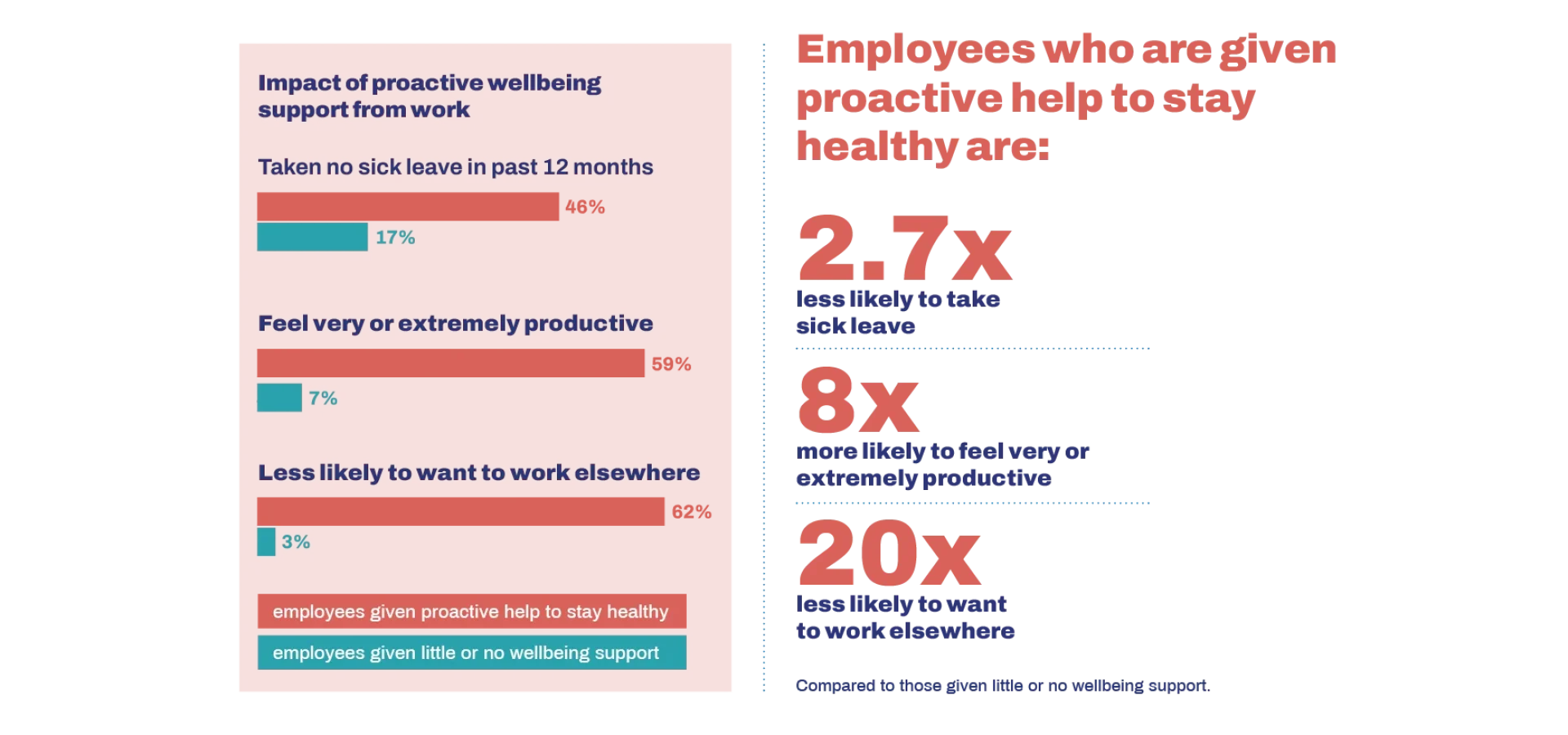

-
- Understand the barriers – Discover which challenges are driving sickness absence for different employees
- Take a proactive approach – See how early support helps employees stay healthy and reduces sick leave.
- Create a culture of wellbeing – Learn how supportive managers and open conversations lower absenteeism.
- Ensure AI tools are effective – Find out which digital solutions actually help employees stay well.
- Prioritise mental health – Explore how timely support prevents stress and reduces absence.
Webinar: Health at Work Report – Key Findings & Actions
Join EAPA Chair, Karl Bennet, and PAM Group’s David Umpleby and Nicola Jagielski as they discuss the key findings and recommendations from this year’s Health at Work Report.
Find out what’s undermining employee wellbeing across different demographics and how to respond to reduce sickness absence and boost productivity
The benefits of proactively supporting employee wellbeing
The Health at Work Survey, of over 1,000 employees, carried out by Sapio, highlights the link between proactive wellbeing support and positive business outcomes.
David Umpleby, managing director, PAM Wellness, says, “One of the standout findings from this year’s Health at Work report is that as well as making employees more than twice as likely to take no sick leave, proactive wellbeing support makes employees eight times more likely say they are very or extremely productive and twenty times less likely to want to work elsewhere.”
He adds, “it’s evident that people are continuing to struggle, with employees experiencing significantly more stress, anxiety and financial worries than when we last ran the report four years ago. It’s unsurprising that more than one in two people want access to mental health counselling, making this the second most valued wellbeing tool after flexible working. However, it’s deeply concerning that just 22% of people have access to mental health counselling and just 11% were able to utilise this in the past year. Instead, younger employees are being put at risk by turning to unproven AI wellbeing tools and one in seven employees has increased their use of drugs or alcohol to cope with worries.”
Nicola Jagielski, clinical director for PAM Wellness adds, “We’re also seeing some interesting generational divides, with employees aged over fifty-five not only more likely to be utilising talking therapies, such as counselling, employee assistance programmes and private GPs than younger workers, but also more likely to prioritise a healthy work-life balance and supportive manager. As a result, they’re experiencing the lowest stress and anxiety levels, but also the least financial worries, which will also be having a positive impact on their overall wellbeing.”
She adds, “We’re also seeing men and women struggling with different issues. Women have been more impacted by stress, anxiety, fatigue and financial worries than men during the past year, while men have experienced greater loneliness, bereavement and suicidal feelings. Critical to supporting individuals is making sure they know how to access support and making them feel safe asking for support. Two in five people have little or no support or don’t know how to access the support that is already in place.”
For the full findings on the benefits most valued by employees and resulting impact on sickness absence and productivity, download the full Health at Work Report 2025.
Related Insights
Free guide to writing a carers policy
How to write a cancer policy
How to support heart health at work
Occupational health insights on keeping your people healthy and productive
Want to have our latest research, case studies and opinions
delivered straight to your inbox?


